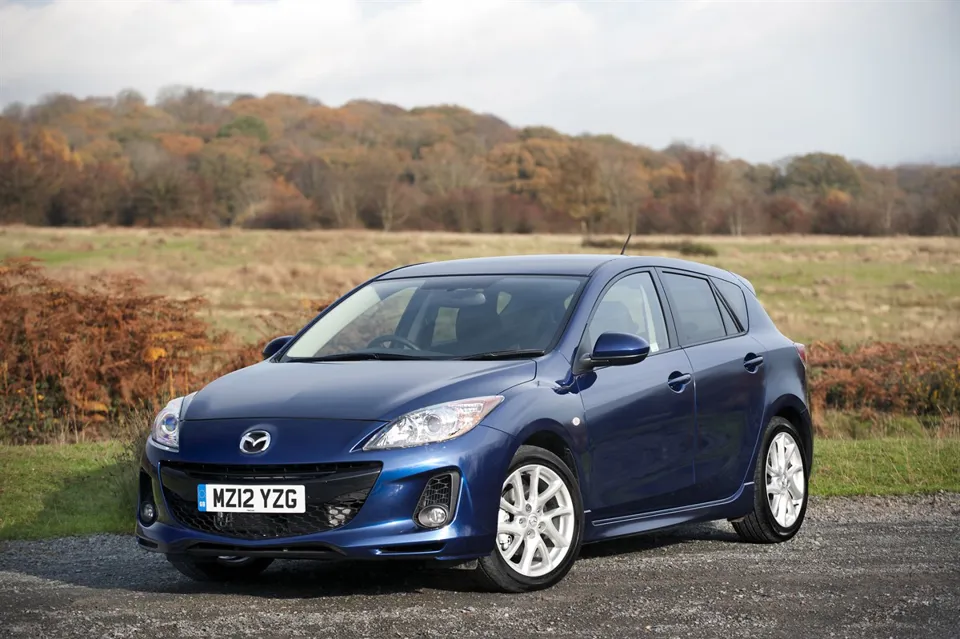The newly launched upgraded Mazda3, which includes the debut of the 1.6-litre diesel Sport model, has been given a residual value uplift of between 3% and 6.5% per model over the benchmark three years/60,000 mile lifecycle.
The boost means valuable cash benefits for fleet operators, while company car drivers will also make financial savings due to CO2 emission cuts of up to 3.5% depending on model delivering benefit-in-kind tax bill reductions. The upgraded range also benefits from fuel economy improvements meaning cuts in fuel bills.
The upgraded range, which features 18 models with a choice of three petrol and two diesel engines (three power outputs), benefits from the RV boost according to experts at vehicle information provider Glass's Guide.
At the benchmark period most models across the five-door hatchback range will retain 34% of their value including the new 115ps 1.6-litre diesel Sport and Sport Nav, according to Glass's Guide. Meanwhile, the flagship 260ps 2.3-litre MZR DISI Turbo MPS will retain 36% and the 185ps 2.2-litre MZR-CD Sport Nav 35%.
In cash terms, the forecast means that the 1.6-litre diesel Sport (£19,095 on-the-road) and Sport Nav (£19,945) will be worth £6,472 and £6,711 respectively at three years/60,000 miles, according to Glass's Guide.
Across the range there is a choice of six trim levels - S, TS, TS2, TS2 Nav, Sport and Sport Nav - as well as the special edition 1.6-litre MZR petrol Tamura and 1.6-litre diesel Tamura. On the road prices for the upgraded Mazda3 range start at £14,995.
Andy Cutler, UK car editor Forecast Values at Glass's Guide, said: "The Sport trim, available on the 1.6-litre diesel engine for the first time, will certainly help demand as it will appeal to a younger market sector in this highly competitive segment.
"Overall the model is a well-priced, good mid-sized hatchback which is competitive against its rivals. The upgrade should help the values of the vehicle stand up a little more as well as have more appeal.
"Fleet operators will overlook the Mazda3 at their peril as the vehicle can certainly hold its own in this segment."
The 1.6-litre diesel models offer ‘low' CO2 emissions (115g/km) and a combined cycle fuel economy of 65.7mpg. The CO2 figure means that the new models slip in to the 17% company car benefit-in-tax bracket for diesel models in 2012/13.
The 150ps 2.2-litre MZR-CD diesel model emits 139g/km - reduced from 144g/km - putting the model into the 21% tax bracket in 2012/13, while the 185ps 2.2-litre MZR-CD diesel model benefits from a 5g/km emissions drop to 144g/km putting it in the 22% tax bracket in 2012/13.
Virtually the entire upgraded range also benefits from fuel economy improvements with the 150ps model receiving a 2mpg boost to record a combined cycle figure of 54.3mpg and the 185ps derivative getting a 1.9mpg improvement to 52.3mpg.
The CO2 output of the 1.6-litre MZR petrol model is 149g/km with combined cycle fuel economy of 43.5mpg, the 2.0-litre MZR DISI petrol is 157g/km - due in part to the ‘i-Stop' (Smart Idling Stop System) - with a combined cycle fuel economy of 42.2mpg.
















Login to comment
Comments
No comments have been made yet.